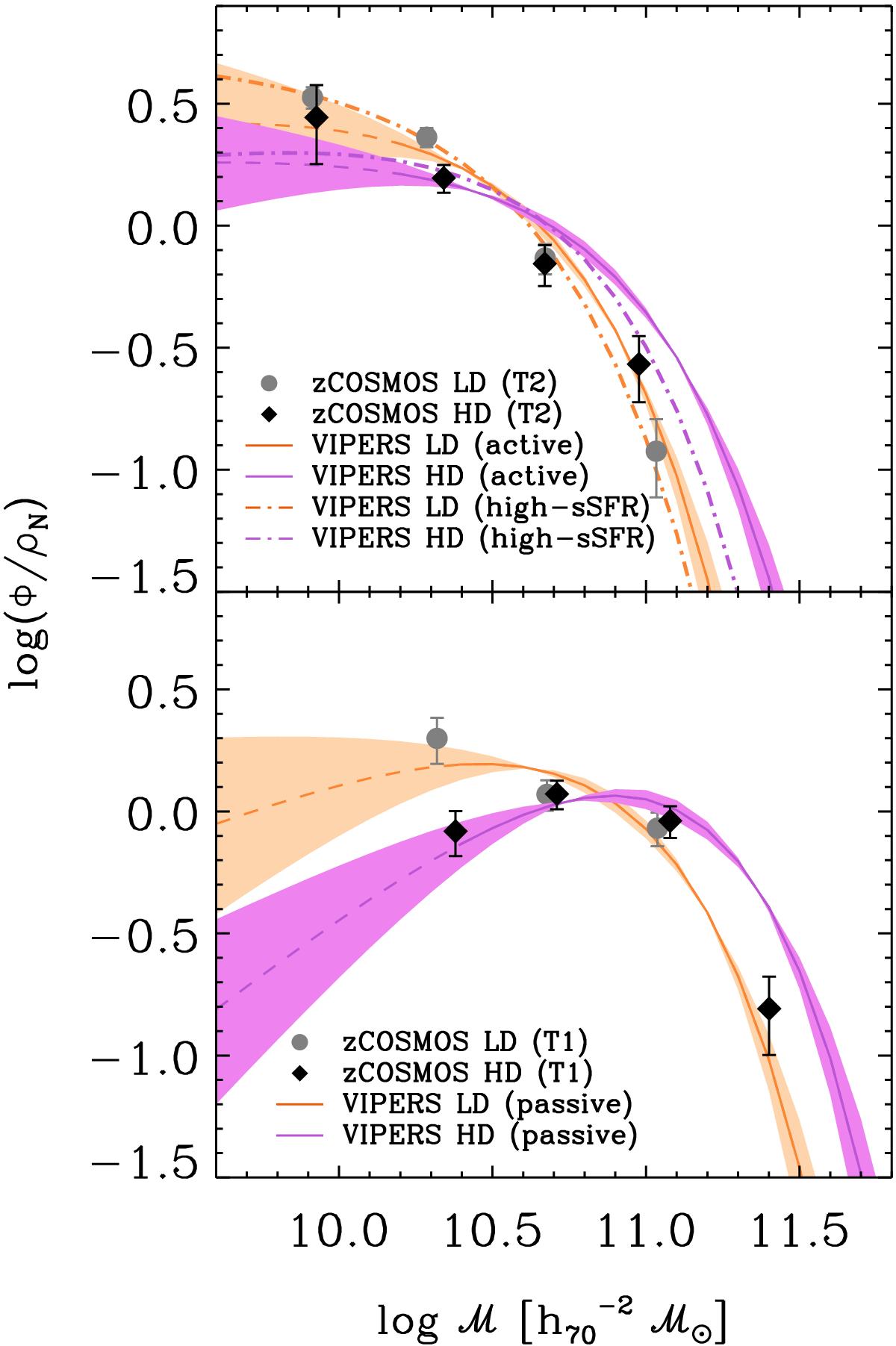Fig. 6

VIPERS (this work) and zCOSMOS (Bolzonella et al. 2010) stellar mass functions of galaxies in LD/HD regions (orange/violet and grey/black colours, see the legend in the top-right corner of each panel). The comparison is restricted to a single redshift bin that is similar in the two surveys (0.5 < z < 0.7 in zCOSMOS, 0.51 < z < 0.65 in VIPERS). All the GSMFs are rescaled to have ρN(ℳ > ℳlim) = 1, as in Fig. 4. In both panels, solid lines represent the STY estimates for the various galaxy samples, with a shaded area encompassing the 1σ uncertainty. (The line is dashed below the stellar mass limit.) Filled circles and diamonds are the 1 /Vmax determinations of the GSMFs of zCOSMOS (LD and HD, respectively). The upper panel includes the stellar mass functions of star-forming galaxies, classified by Bolzonella et al. (2010) according to their photometric types (T2, i.e. late-type galaxies), and by means of the NUVrK diagram in our analysis. With dot-dashed lines we also show the stellar mass function of the VIPERS galaxies having high sSFR (i.e. those remaining after removing the NUVrK-intermediate objects from the active sample). In the lower panel, the VIPERS passive sample and the zCOSMOS early-type galaxies (i.e. T1 spectrophotometric types) are considered.
Current usage metrics show cumulative count of Article Views (full-text article views including HTML views, PDF and ePub downloads, according to the available data) and Abstracts Views on Vision4Press platform.
Data correspond to usage on the plateform after 2015. The current usage metrics is available 48-96 hours after online publication and is updated daily on week days.
Initial download of the metrics may take a while.


